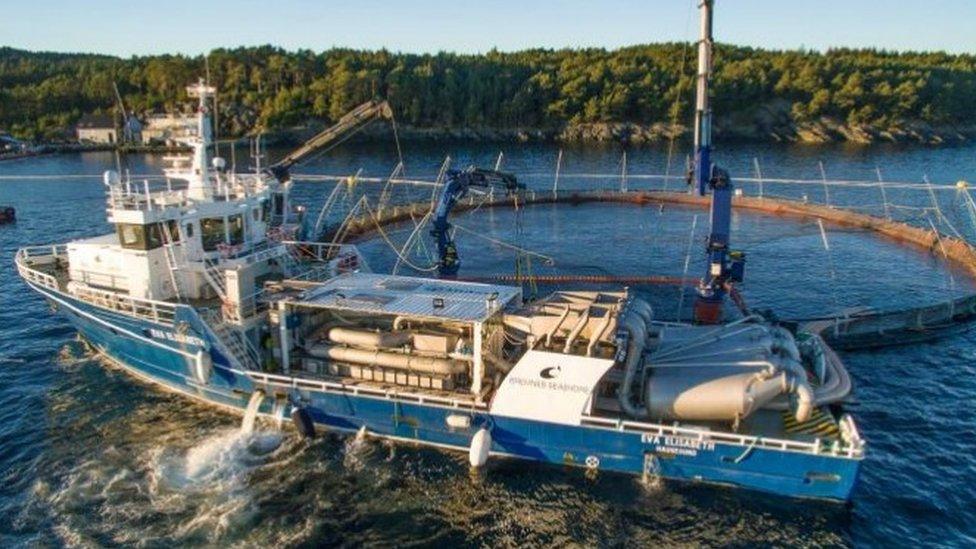Salmon firm reveals impact of sea lice
- Published
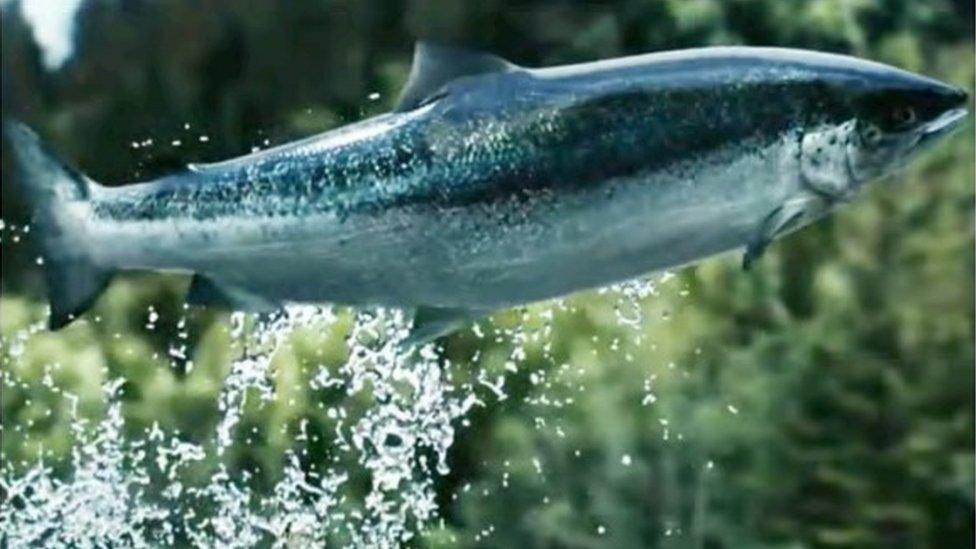
Marine Harvest has revealed that more than two-thirds of its salmon farms in Scotland broke statutory sea lice limits last year.
The figure of 69% was more than four times the average for the Norwegian group's overall operations.
Marine Harvest cited a number of factors for the difficulty in tackling the problem of sea lice in Scotland.
They included "abnormally high water temperatures for extended periods" and insufficient cleaner fish capacity.
Sea lice feed on the skin and blood of salmon, and can weaken the health of fish and its growth.
In its annual report, Marine Harvest highlighted the impact of the parasites on its operations in Scotland, where it operates more than 50 sites.
Last year, it harvested about 45,000 tonnes of salmon of Scottish origin - more than 5,000 less than in 2015.
The company said mortality losses amounted to 6.5 million euros, while costs associated with sea lice treatment and mitigation rose substantially.
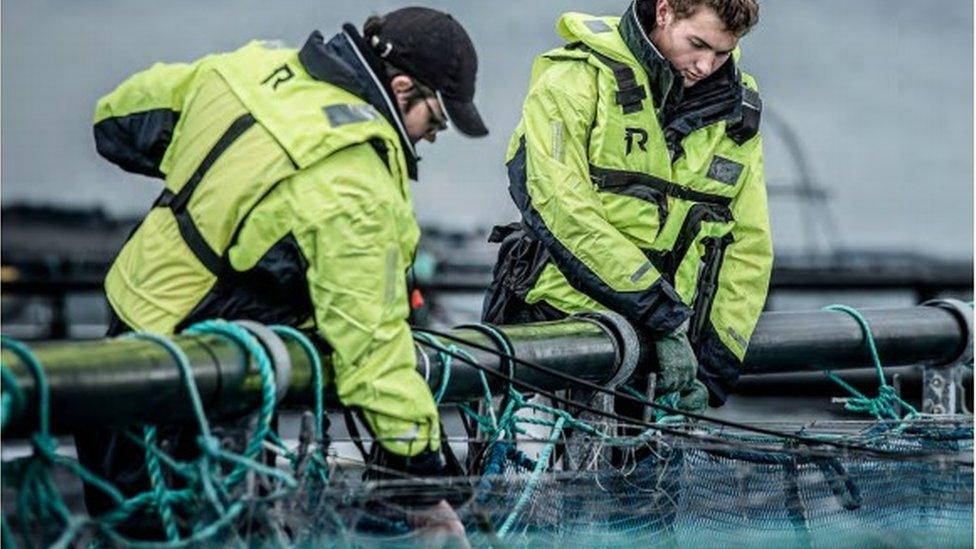
Marine Harvest said it had made good progress in tackling sea lice at its business units in Ireland, Canada and to some extent Chile.
However, it added: "Disappointingly, several factors, including abnormally high water temperatures for extended periods, insufficient cleaner fish capacity, limited access to non-medicinal treatment systems and extraordinary lice pressure, singly or in combination, precluded optimal control and hampered full application of our strategy in Scotland."
The group said new non-medicinal lice treatment methods, including Thermolicers - which bathe fish briefly in lukewarm water - had generated "new challenges", particularly at its Greshornish site on the Isle of Skye.
It added: "At Greshornish, we lost 115,283 fish during our first full-scale Thermolicer treatment because we lacked experience and failed to fully anticipate the consequences of treating fish compromised by amoebic gill disease with water of up to 34 degrees centigrade.
"This incident highlights the importance of experience and the fine line in judging how and when we treat our fish stocks. We will do our utmost to prevent this from happening in the future."
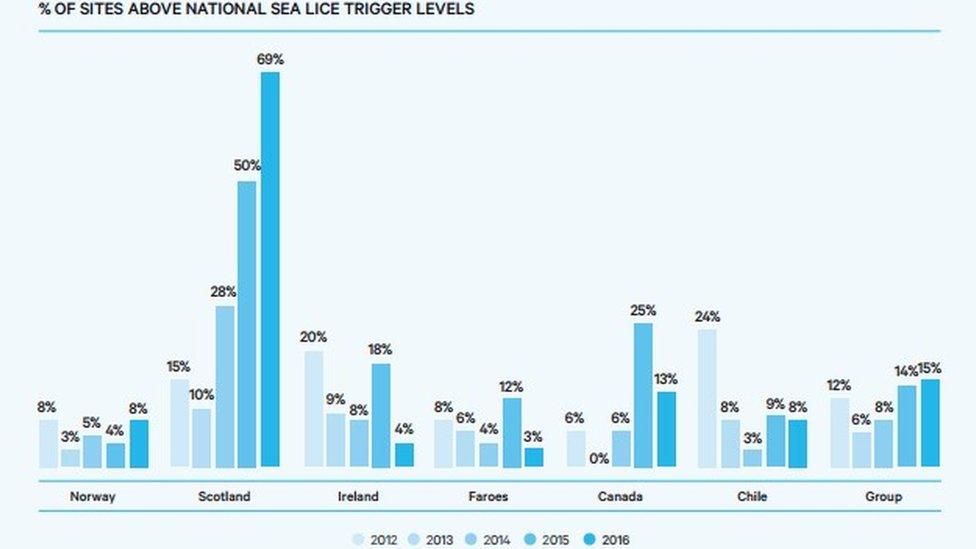
This Marine Harvest graph shows 69% of its Scottish sites went above accepted sea lice levels last year
Marine Harvest said its research and development focus now included the "optimisation" of non-medicinal treatments and cleaner-fish use, as well as "biotechnological solutions".
Chief executive Alf-Helge Aarskog said: "Sea lice remain our number one challenge, and as such will continue to be our top R&D priority for the foreseeable future.
"Uncontrolled, sea lice impact fish welfare, survival and growth.
"However, it has become apparent that sea lice numbers can be brought under control through increased use of non-medicinal treatment methods.
"Although we still have a way to go, we increased our use of non-medicinal tools in 2016 and expect to reap the benefits of our efforts going forward."
- Published14 February 2017
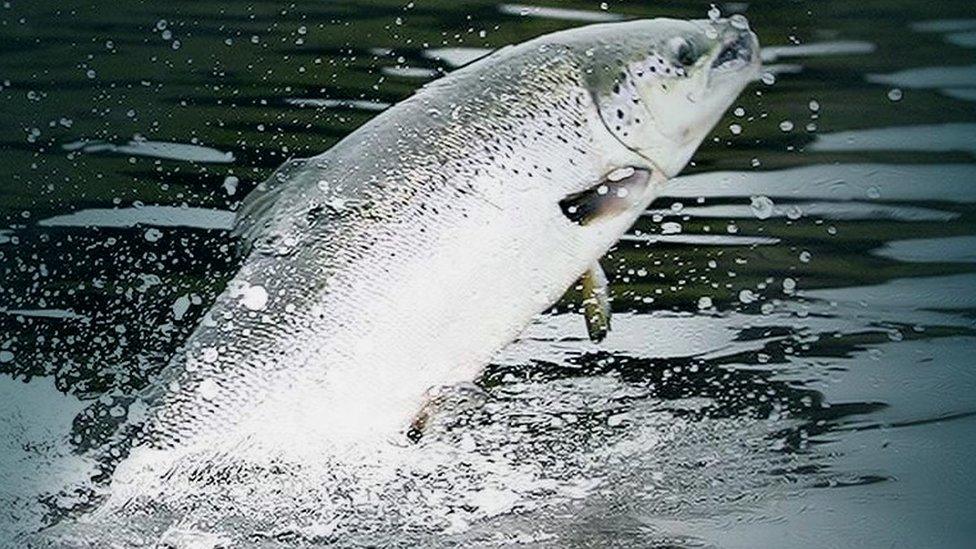
- Published16 July 2016
